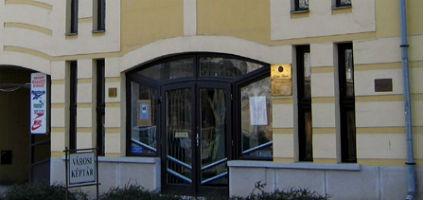2024. November 22. Friday
Town Gallery - Orosháza
 |
Address: 5900, Orosháza Thék Endre utca 1.
Phone number: (68) 472-350, (68) 412-523
E-mail: keptar@pmk.oroshaza.hu
Opening hours: Tue-Wed 9-14, Thu 10-17, Sat 9-13
|
Boldizsár István was bon on 29, July 1897 in Orosháza. He belonged to the third generation of the Nagybányai School that formed in 1986 and influenced the development of Hungarian fine art for the following years. He grew up in Orosháza; his interest in art can be traced back to his childhood and the family relation Tornyai János. His talent was soon discovered.
The first time he went to Nagybánya was in the summer of 1917. He was the student of the Collage of Fine Arts. This experience influenced his whole oeuvre. In 1920, he enrolled the Academy of München where he learned the technique of engraving. In the fall of 1924 he moved in Budapest again where he made friends with Szőnyi István who also influenced him greatly. The first time his technique was discovered was in 1928 at a Hungarian exhibition in Rome. In 1930 he won the Zichy Mihály Graphics Prize of the Szinyei Merse Association.
The topics of his engravings are documentaries since he wanted to record the Great Hungarian Planes that has already changed since. In 1940, he became the painting and figure-drawing teacher at the Collage of Fine Arts of Budapest. He visited the Lake Balaton with his students at summers when he did several paintings of the lake.
The technical problems always interested Boldizsár István. He managed to have the excellent effect of the colors of his pictures by mixing oil paint, turpentine mixture from Venice and tempera. Politicians and public figures ordered several portraits from him. He painted most of his artist colleagues as well such as Csók István. He painted one of the most famous portraits of Iványi Grünwald Béla just before his death. These works are very characteristic; the personality of the model comes through them. He did portraits in the genre of engraving too. The most famous of them is the portrait of Semmelweis Ignác.
He showed another of his faces in still-lifes. He changed the dead nature into a living entity. The bouquets in the front were highlighted with giant color contrasts.
Boldizsár István traveled around the country but he yearned to return to the land of his birth in the last years of his life. He rented a house in Minszent to where and Nagyszénás he often returned to work. His art was fulfilled, became expressive, his colors shed a dramatic atmosphere. He donated 36 of his paintings to Orosháza in his life in 1977. A gallery under his name opened in the same year.
The first time he went to Nagybánya was in the summer of 1917. He was the student of the Collage of Fine Arts. This experience influenced his whole oeuvre. In 1920, he enrolled the Academy of München where he learned the technique of engraving. In the fall of 1924 he moved in Budapest again where he made friends with Szőnyi István who also influenced him greatly. The first time his technique was discovered was in 1928 at a Hungarian exhibition in Rome. In 1930 he won the Zichy Mihály Graphics Prize of the Szinyei Merse Association.
The topics of his engravings are documentaries since he wanted to record the Great Hungarian Planes that has already changed since. In 1940, he became the painting and figure-drawing teacher at the Collage of Fine Arts of Budapest. He visited the Lake Balaton with his students at summers when he did several paintings of the lake.
The technical problems always interested Boldizsár István. He managed to have the excellent effect of the colors of his pictures by mixing oil paint, turpentine mixture from Venice and tempera. Politicians and public figures ordered several portraits from him. He painted most of his artist colleagues as well such as Csók István. He painted one of the most famous portraits of Iványi Grünwald Béla just before his death. These works are very characteristic; the personality of the model comes through them. He did portraits in the genre of engraving too. The most famous of them is the portrait of Semmelweis Ignác.
He showed another of his faces in still-lifes. He changed the dead nature into a living entity. The bouquets in the front were highlighted with giant color contrasts.
Boldizsár István traveled around the country but he yearned to return to the land of his birth in the last years of his life. He rented a house in Minszent to where and Nagyszénás he often returned to work. His art was fulfilled, became expressive, his colors shed a dramatic atmosphere. He donated 36 of his paintings to Orosháza in his life in 1977. A gallery under his name opened in the same year.